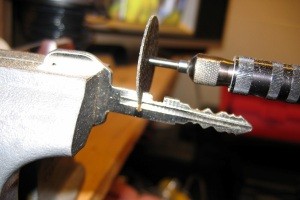Types of Hinges for uPVC Doors
If your uPVC door dangles or drops, it could be due to hinges. It is possible that you need to replace or adjust the hinges of your uPVC door to allow it to operate smoothly.
Hinges are made up of flat hinge leaves (or plates), knuckles, and a hinge pin. They allow for compression and lateral adjustments.

Butt Hinges
There are many types and sizes of hinges. Each hinge has its own distinctive features to meet different requirements for installation. Butt hinges offer strength and durability to doors. They are also available in a wide range of styles and finishes to complement the appearance of the door or installation area. There are also specialty hinges that are designed to meet specific requirements like pivoting hinges, or fully hidden barrel hinges.
A butt hinge is comprised of two leaves that have three or more knuckles, a pin and a curved barrel. The knuckle, or barrel, houses the hinge's pivot point. It is typically attached to the leaves by screws.
Butt hinges can support heavier loads than other hinges. This is because their larger knuckle offers more support to leafs. Additionally, butt hinges are more able to handle expansion and contraction, making them more resistant to the effects of extreme temperatures.
Butt hinges can be installed in recessed surfaces. They aren't visible when the door opens or closes. This provides the door with a more smooth appearance and a refined look. However, they might require routing to achieve an even finish.
Butt hinges have their own disadvantages. The friction they cause can, for instance, wear out the hinges over time. It is recommended that hinges are regularly cleaned and lubricated to minimize the chance of this. This will stop friction from causing wear on the knuckles and will ensure that they are working efficiently.
Some butt hinges reduce friction by putting an internal ball bearing between the knuckles. These hinges are ideal for heavy-duty, high-use doors. They are also available with a fixed pin which is ideal for doors that are secure and cannot be opened by removing the pin.
Other types of butts hinges include a plain bearing lubricated with grease which reduces friction and allows the hinge to be moved without much force. These are recommended for lighter uses, including cabinet doors. These pins can also be purchased with spin-ends that ensure the pin will remain in the correct position.
Butt hinges are commonly used in residential settings, however they are also used in commercial and industrial applications. They are used to protect patients against radiation and contamination by neutrons in research and medical facilities as well as vaults and security systems. They are also utilized in the military and defense industry to secure armored vehicles and transporters. Stainless steel or brass is commonly used to improve the resistance to corrosion and durability.
Flag Hinges
A hinge is a bearing that joins two parts and allows them to move around a fixed point. Hinges are usually made of metal and come in various designs, sizes, and weight capacities to accommodate different applications. They are used on a variety of objects including doors, enclosures and lids, and are available in various finishes to match the aesthetic of the application. Certain hinges are utilized on doors and uPVC Windows. These hinges include butt, continuous, and flag hinges.
Butt hinges are typically used to support the sash of doors, and provide the necessary stability for smooth operation and longevity. They are designed to be placed between the frame of the door and sash, giving an unobtrusive, clean appearance when closed. They allow the door to open or close smoothly around the pin connecting the two hinges. They also spread the weight of the sash evenly throughout the time to provide more efficient performance.
Like other types of hinges Butt hinges are also available in a range of sizes and load-bearing capacity to handle different door sizes and weights. The type of application and the desired durability and performance will determine the kind of hinge to choose. The hinge's load-bearing capability is determined by the amount and duration of pressure that is applied to it. A hinge that is stronger-duty is needed for applications that require a lot of force.
Flag hinges are a typical type of hinge for doors and are suitable for a range of applications and door sizes. They are generally lighter and smaller than other types of hinges, making them ideal for use in lightweight doors. They are also extremely robust and can withstand a lot of forces, making them a good choice for high-traffic areas.
The first step in putting together the flag hinge is to mark out the locations of the screw and pin-locating holes. This can be done on both the door sash as well as the hinge body. Using the fixing jig, pre-drill these positions and then screw the hinge plate onto the sash so that it is flush with the profile. To prevent damage to the frame of the sash, or the sash itself, make sure that the screws located farthest away from the hinge are anchored into the steel reinforcing and plastic instead of the wood. Then, insert the hinge body pin into each of the slots that are used to locate the plate. Secure door hinge repair with the screws that correspond to it.
For the majority of applications, a standard uPVC door will require x3 hinges with the top hinge located 150mm from the top edge of the door sash and the middle and bottom hinges located equally between the outermost x3 hinges. Close the door sash and raise it up to its maximum height. You should be able see the hinges in their full length. If not, the hinges may be too far apart. The door will not be able to operate smoothly or safely.
